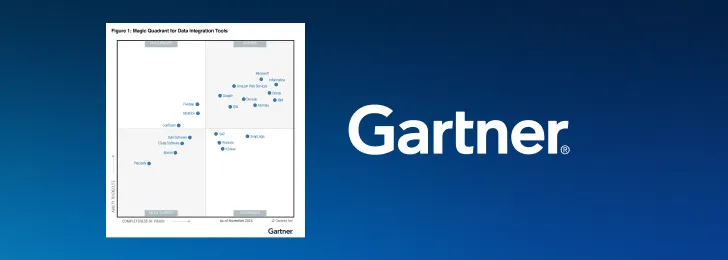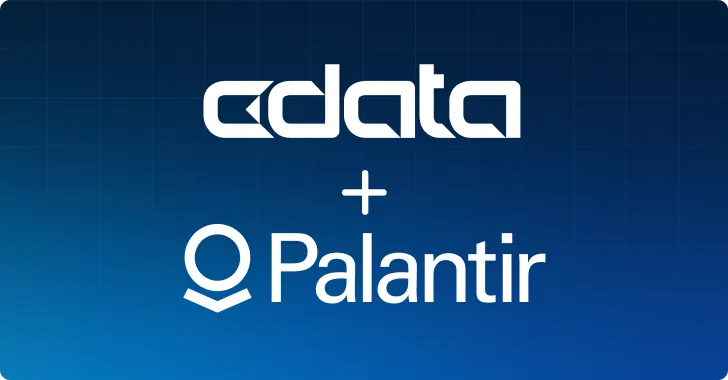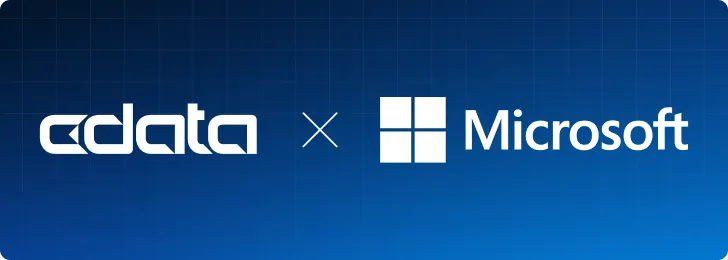
Business Intelligence (BI) tools are sophisticated software systems designed to extract, analyze, and transform data into actionable insights. These business analytics tools are pivotal for companies looking to thrive in a data-driven world. By leveraging top BI tools, companies can transform raw business data – often from multiple systems – into an easily understood portrait of the organization, helping key stakeholders make informed decisions, forecast future trends, and enhance operational efficiency.
When you combine the ever-growing data ecosystem with today's competitive landscape, the ability to quickly interpret and act on data becomes more crucial and complex than ever. Business intelligence solutions empower businesses with real-time data access, offering a comprehensive view of their operations and markets. With immediate insights from these BI tools, organizations can manage their data effectively, stay ahead of competitors, and adapt to ever-changing market dynamics.
In this post, we'll explore the definition and scope of BI tools, how they work, and how to choose the right business intelligence platform to meet your company's needs. From data visualization to predictive analytics, business analytics tools can provide valuable insights and optimize operations. With CData connectivity solutions, you can empower business intelligence across your organization.
8 Benefits of business intelligence solutions
Business intelligence tools and platforms offer numerous benefits to organizations, enabling them to make better-informed decisions, optimize processes, and gain a competitive edge. Some key benefits of implementing business intelligence solutions include:
Improved decision making
BI tools enable decision-makers to base their strategies on data-driven insights rather than intuition. These top BI tools help identify trends, understand customer behavior, and forecast future market movements, leading to more accurate, timely, and strategic decisions.
Increased efficiency and productivity
Automating data collection streamlines workflows, reducing the time and effort spent on manual data entry and report generation. Employees can focus on analyzing data rather than compiling it, increasing productivity and freeing time for strategic activities.
Enhanced data quality and accuracy
Business intelligence tools consolidate data from multiple sources into a single model, ensuring consistency and accuracy. This uniformity is crucial for reliable analytics, reducing errors and discrepancies that could lead to faulty conclusions.
In-depth business insights
BI tools allow organizations to delve deep into data to uncover hidden patterns and relationships. This capability reveals insights into operational bottlenecks, customer preferences, and market trends, providing a comprehensive understanding of internal and external factors affecting the business.
Competitive advantage
Detailed analytics equip businesses with the knowledge to identify market opportunities and trends ahead of competitors. This proactive approach, facilitated by business intelligence solutions, can lead to innovative products, better market positioning, and a more agile response to market dynamics.
Increased revenue and cost reduction
By helping organizations identify the most profitable areas of the business, BI tools contribute directly to increased revenue. Simultaneously, these tools aid in pinpointing inefficiencies, allowing for more effective budget management and cost reduction strategies.
Enhanced customer satisfaction
Understanding customer behavior and preferences through business analytics tools leads to better product development, targeted marketing, and personalized customer service. This attracts new customers and enhances loyalty among existing ones, directly impacting satisfaction and retention.
Risk management and compliance
Business intelligence solutions help uncover potential risks by analyzing trends and patterns within the data, enabling timely, data-driven risk mitigation strategies. BI tools also ensure regulatory compliance by monitoring and reporting on data relevant to industry-specific regulations, thereby avoiding legal and financial penalties.
Business intelligence tools offer a multifaceted approach to improving operational efficiency, strategic planning, and overall business performance. By leveraging the power of business analytics tools, organizations can achieve a significant competitive edge and drive sustainable growth.
10 Business intelligence analysis tools
Business intelligence tools are available both on-premises and in the cloud. The list below includes some of the best BI tools available (in no particular order), but keep an eye out for future content around cloud-based BI tooling:
Microsoft Power BI
Known for its user-friendly interface, Microsoft Power BI makes it easy to create and share reports and dashboards. With a wide range of built-in data connectors, it integrates seamlessly with various data sources, and the CData Power BI Connector further extends its connectivity, offering a complete business intelligence solution for data visualization and reporting.
Tableau Desktop
Tableau Desktop excels in data visualization, enabling users to create interactive, visually compelling reports with its intuitive drag-and-drop interface. It handles large datasets and real-time analysis efficiently, and the CData Tableau Connector enhances its connectivity, supporting both live and extract connections.
SAS BI & Analytics
Renowned for its advanced predictive analytics and data mining, SAS BI & Analytics is ideal for industries requiring detailed statistical analysis. Its robust suite, including forecasting and text analytics, provides actionable insights, allowing organizations to make highly accurate, data-driven decisions.
Oracle Business Intelligence (Oracle BI)
Oracle BI offers a comprehensive set of tools, including ad-hoc analysis, OLAP, and detailed reporting, well-suited for businesses integrated with Oracle's ecosystem. Its tight integration with Oracle products ensures scalability and security, making it ideal for enterprises needing to manage large data volumes.
IBM Cognos Analytics
IBM Cognos Analytics is a robust enterprise-level BI platform known for comprehensive reporting and analytics. Enhanced with AI-assisted data preparation, it integrates well with various data sources and offers strong security features, making it ideal for large organizations requiring scalable business intelligence solutions.
MicroStrategy
MicroStrategy stands out for its high scalability and advanced analytics, making it ideal for large-scale enterprise data analysis. The platform offers interactive dashboards and real-time insights, with features like mobile analytics and embedded BI tools providing flexibility across different devices and platforms.
QlikView
QlikView is recognized for its associative data modeling, allowing intuitive exploration of relationships between datasets. With fast query performance and user-friendly interactive visualizations, it is a popular choice for ad-hoc analysis and self-service analytics in data-driven organizations.
SAP BusinessObjects
SAP BusinessObjects is a versatile BI suite known for powerful ad-hoc reporting and diverse data integration options. It supports complex business environments and large-scale deployments, offering customizable reporting tools tailored to specific business needs.
Pentaho
Pentaho offers a comprehensive, open-source business intelligence platform for data integration and analytics, supporting functionalities like OLAP, reporting, and data mining. Its flexible and scalable design, along with support for big data technologies, makes it suitable for businesses of all sizes.
TIBCO Spotfire
TIBCO Spotfire is powerful for data visualization and predictive analytics, excelling in real-time data exploration. Its intuitive interface and advanced analytics capabilities, including machine learning, make it ideal for industries requiring rapid, data-driven decision-making.
Types of business intelligence tools
There are numerous options for business intelligence solutions, but they can generally be sorted into the following categories:
- Spreadsheets: Despite the advancement in business intelligence tools, spreadsheets like Microsoft Excel remain a fundamental part of BI. They are versatile, widely used for basic data manipulation, analysis, and visualization, favored for their accessibility, ease of use, and ability to perform ad-hoc data analysis.
- Data visualization tools: These top BI tools, like Tableau and Microsoft Power BI, are designed to turn complex data sets into understandable graphical formats. They are essential for identifying trends and patterns through various visualization methods such as charts, graphs, and heat maps.
- Dashboards and reporting tools: Tools like Domo and QlikView specialize in creating interactive dashboards. They provide real-time insights by tracking key performance indicators (KPIs) and consolidating data from multiple sources, which is crucial for ongoing monitoring and quick decision-making.
- OLAP (online analytical processing) tools: OLAP tools are used for multi-dimensional data analysis, offering deep insights through complex queries. Examples include SQL Server Analysis Services, Apache Kylin, and IBM Cognos. These business analytics tools are adept at handling data slicing, dicing, and scenario analysis.
- Predictive analytics tools: Tools such as Alteryx and IBM SPSS use statistical models and machine learning algorithms to predict future trends. They are valuable for data mining, predictive modeling, and assessing potential future scenarios.
How to choose the right business intelligence platform
Selecting the right business intelligence platform for your business involves careful consideration of various factors. Below are a handful of comprehensive tips to guide your decision:
- Identify crucial criteria for your business: Align the BI tools with your business objectives and ensure compatibility with your existing IT infrastructure for seamless integration with systems like CRM or ERP.
- Opt for user-friendliness: Choose a business intelligence platform that is intuitive and accessible, offering customizable dashboards and reports with minimal training requirements and strong vendor support.
- Understand the BI tool's pricing and scalability: Consider both initial and ongoing costs and ensure the tool can scale with your business growth, handling increased data volume and user numbers without performance issues.
- Evaluate data processing and analytical capabilities: Ensure the BI platform can efficiently process your data and offers advanced analytical features, such as predictive analytics and real-time processing, to meet your business needs.
- Consider security and compliance: Select a business intelligence solution with robust security features, such as encryption and access controls, that also supports compliance with industry regulations like GDPR or HIPAA.
When choosing a business intelligence platform, various considerations must be weighed differently depending on your organization. Ultimately, the right tool should align with your current business requirements and be adaptable to future changes and growth in the data landscape.
Empowered BI with CData Software
No matter which business intelligence platform you adopt, it must have access to your data. Whether you're using Power BI, Tableau, or virtually any other BI tool (on-premises or in the cloud), CData can empower your organization's business intelligence with its suite of connectivity solutions. Get access to live data from anywhere for real-time analytics or consolidate your data for comprehensive and historical reporting.
Try CData today
Ready to uplevel your analytics strategy? Download a free trial of CData Drivers to instantly connect to any data directly in your reporting tools.





